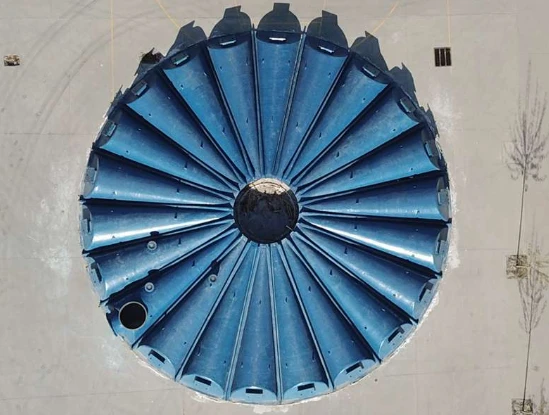
-
 Afrikaans
Afrikaans -
 Albanian
Albanian -
 Amharic
Amharic -
 Arabic
Arabic -
 Armenian
Armenian -
 Azerbaijani
Azerbaijani -
 Basque
Basque -
 Belarusian
Belarusian -
 Bengali
Bengali -
 Bosnian
Bosnian -
 Bulgarian
Bulgarian -
 Catalan
Catalan -
 Cebuano
Cebuano -
 China
China -
 China (Taiwan)
China (Taiwan) -
 Corsican
Corsican -
 Croatian
Croatian -
 Czech
Czech -
 Danish
Danish -
 Dutch
Dutch -
 English
English -
 Esperanto
Esperanto -
 Estonian
Estonian -
 Finnish
Finnish -
 French
French -
 Frisian
Frisian -
 Galician
Galician -
 Georgian
Georgian -
 German
German -
 Greek
Greek -
 Gujarati
Gujarati -
 Haitian Creole
Haitian Creole -
 hausa
hausa -
 hawaiian
hawaiian -
 Hebrew
Hebrew -
 Hindi
Hindi -
 Miao
Miao -
 Hungarian
Hungarian -
 Icelandic
Icelandic -
 igbo
igbo -
 Indonesian
Indonesian -
 irish
irish -
 Italian
Italian -
 Japanese
Japanese -
 Javanese
Javanese -
 Kannada
Kannada -
 kazakh
kazakh -
 Khmer
Khmer -
 Rwandese
Rwandese -
 Korean
Korean -
 Kurdish
Kurdish -
 Kyrgyz
Kyrgyz -
 Lao
Lao -
 Latin
Latin -
 Latvian
Latvian -
 Lithuanian
Lithuanian -
 Luxembourgish
Luxembourgish -
 Macedonian
Macedonian -
 Malgashi
Malgashi -
 Malay
Malay -
 Malayalam
Malayalam -
 Maltese
Maltese -
 Maori
Maori -
 Marathi
Marathi -
 Mongolian
Mongolian -
 Myanmar
Myanmar -
 Nepali
Nepali -
 Norwegian
Norwegian -
 Norwegian
Norwegian -
 Occitan
Occitan -
 Pashto
Pashto -
 Persian
Persian -
 Polish
Polish -
 Portuguese
Portuguese -
 Punjabi
Punjabi -
 Romanian
Romanian -
 Russian
Russian -
 Samoan
Samoan -
 Scottish Gaelic
Scottish Gaelic -
 Serbian
Serbian -
 Sesotho
Sesotho -
 Shona
Shona -
 Sindhi
Sindhi -
 Sinhala
Sinhala -
 Slovak
Slovak -
 Slovenian
Slovenian -
 Somali
Somali -
 Spanish
Spanish -
 Sundanese
Sundanese -
 Swahili
Swahili -
 Swedish
Swedish -
 Tagalog
Tagalog -
 Tajik
Tajik -
 Tamil
Tamil -
 Tatar
Tatar -
 Telugu
Telugu -
 Thai
Thai -
 Turkish
Turkish -
 Turkmen
Turkmen -
 Ukrainian
Ukrainian -
 Urdu
Urdu -
 Uighur
Uighur -
 Uzbek
Uzbek -
 Vietnamese
Vietnamese -
 Welsh
Welsh -
 Bantu
Bantu -
 Yiddish
Yiddish -
 Yoruba
Yoruba -
 Zulu
Zulu
drilling through limestone is challenging.
The Challenges of Drilling Through Limestone
Drilling through limestone presents a set of unique challenges that can significantly impact the efficiency and effectiveness of construction and geological projects. Limestone, a sedimentary rock primarily composed of calcium carbonate, is widely used in various industries, including construction, agriculture, and manufacturing. However, its distinctive geological characteristics pose obstacles that must be carefully managed during drilling operations.
One of the primary challenges associated with drilling through limestone is its hardness. While limestone is generally softer than other types of rock, such as granite or basalt, its durability increases when it undergoes certain geological processes. Over time, limestone can become compacted and harder due to pressure and other environmental factors. This increased hardness can lead to excessive wear on drilling equipment, resulting in higher operational costs and the need for more frequent equipment maintenance or replacements. Consequently, selecting the right drill bit and tool configuration is crucial when attempting to penetrate limestone effectively.
Another significant issue is the presence of fissures and cracks within limestone formations. These natural fractures can complicate drilling efforts by creating unpredictable pathways for the drill bit. A drill that inadvertently follows a fissure may veer off course, leading to wasted time, resources, and potential safety hazards. Understanding the geology of the area and employing advanced imaging technology can help drillers anticipate and navigate these complexities. Even so, accurate predictions are often difficult due to the unpredictable nature of subsurface formations.
drilling through limestone is challenging.

The moisture content of limestone can also present challenges. When limestone is exposed to water, it can undergo chemical reactions that may weaken the rock or create additional hazards, such as cave-ins or collapsing drill holes. This reaction, known as carbonation, occurs when carbon dioxide interacts with water and limestone, leading to the formation of calcium carbonate, a softer and more soluble substance. Drillers must take precautions to monitor and manage water near limestone formations carefully.
Furthermore, environmental considerations are becoming increasingly important in drilling projects. Areas rich in limestone often have ecosystems that are sensitive to disruptions caused by drilling activities. The potential for contamination of groundwater, habitat destruction, and noise pollution necessitates careful planning and adherence to regulatory standards. Drilling companies must implement environmentally-friendly practices to mitigate the impact of their operations, which may add to the overall complexity and cost of the project.
Finally, the economic factors associated with drilling through limestone cannot be overlooked. The combined challenges of equipment wear, unpredictable geological conditions, environmental regulations, and potential project delays can lead to significantly increased costs. As a result, project managers must perform comprehensive cost-benefit analyses before diving into drilling operations, ensuring that their investment is justified by the anticipated returns.
In conclusion, drilling through limestone is fraught with challenges that require careful consideration and strategic planning. While the versatility and availability of limestone make it a valuable resource, the obstacles posed during drilling operations can complicate its extraction. Advances in technology and a deeper understanding of limestone geology can aid in overcoming these challenges, but the complexities involved highlight the importance of thorough preparation and environmental responsibility. By addressing the hardness of the rock, the potential for fissures, the impact of moisture, environmental considerations, and economic implications, drilling operations can be better managed, leading to more successful outcomes in limestone-rich regions.









